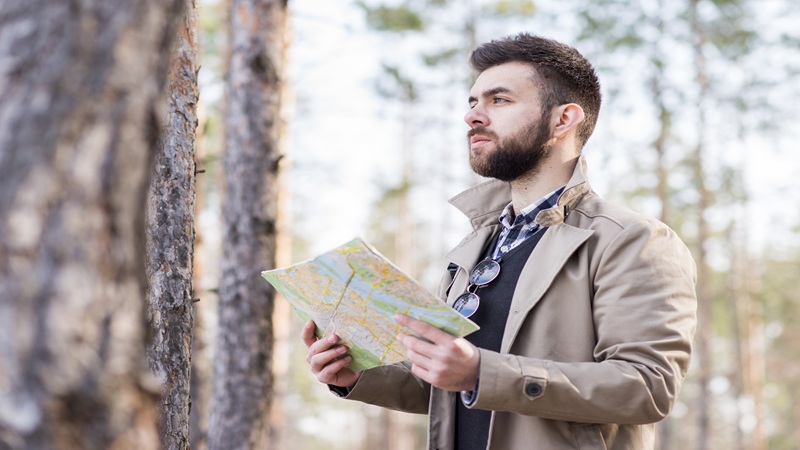In the vast web of life on Earth, one of the most fascinating processes influencing biodiversity is biogeographic isolation. This concept describes the separation of populations by geographic barriers such as mountains, rivers, oceans, deserts, or even climatic zones. Once populations are divided, they can no longer freely interbreed, leading to gradual genetic divergence and the eventual formation of new species.
Biogeographic isolation is not just a biological phenomenon; it is one of the fundamental mechanisms behind evolution and speciation. From Darwin’s observations of finches on the Galápagos Islands to modern studies of isolated ecosystems, scientists have recognized that when populations are cut off from one another, the forces of natural selection, mutation, and genetic drift shape them in different ways.
This article provides an in-depth exploration of biogeographic isolation, examining how it works, why it matters, and how it continues to influence ecosystems and species across the globe.
What is Biogeographic Isolation?
Biogeographic isolation occurs when a population of organisms is separated by a physical barrier or environmental change, preventing them from mating with others of their kind. Over time, these isolated groups accumulate genetic differences that may lead to the emergence of distinct species.
In simple terms, it is nature’s way of saying, “You’re on your own now—adapt or perish.”
This separation can be caused by:
-
Mountains: Uplifted ranges dividing populations of plants and animals.
-
Oceans and Rivers: Water bodies isolating terrestrial species.
-
Deserts or Glaciers: Harsh environments acting as natural boundaries.
-
Continental Drift: Movement of tectonic plates breaking populations apart.
-
Climate Changes: Shifts in temperature and rainfall altering habitats.
When these barriers persist over long periods, genetic exchange between the separated populations becomes impossible, making them evolve independently.
Mechanisms of Biogeographic Isolation
Biogeographic isolation is not a single process but rather a combination of multiple ecological and evolutionary mechanisms. The most important ones include:
Allopatric Speciation
This is the most common outcome of biogeographic isolation. When a population is split geographically, each group adapts to its own environment. Over time, reproductive barriers arise, making interbreeding impossible even if they come back into contact. Darwin’s finches are the classic example.
Peripatric Speciation
Here, a small population at the edge of a larger population becomes isolated. Because of its smaller size, genetic drift plays a significant role, causing rapid divergence.
Parapatric Speciation
Though not entirely isolated, populations living at the edges of different habitats may face distinct selective pressures, leading to divergence over time.
Sympatric Speciation with Isolation Influence
While sympatric speciation occurs without physical barriers, environmental changes can still create micro-barriers, like different host plants or feeding zones, leading to reproductive separation within the same area.
Examples of Biogeographic Isolation in Nature
Darwin’s Finches
On the Galápagos Islands, finches isolated on separate islands evolved different beak shapes and feeding behaviors. This demonstrates how geographic separation fosters adaptation to local resources.
Grand Canyon Squirrels
The Kaibab squirrel and the Abert’s squirrel, separated by the Grand Canyon, evolved into distinct species despite sharing a common ancestor.
Australian Marsupials
Australia’s geographic isolation allowed marsupials to dominate, while placental mammals thrived elsewhere. This resulted in unique species like kangaroos and koalas.
Cichlid Fishes in African Lakes
Lake Victoria, Lake Malawi, and Lake Tanganyika host hundreds of unique cichlid species. The isolation of these lakes provided perfect conditions for explosive speciation.
Himalayan Biodiversity
The rise of the Himalayas separated species, giving rise to unique flora and fauna adapted to high altitudes.
Evolutionary Importance of Biogeographic Isolation
Biogeographic isolation plays a central role in evolutionary biology for several reasons:
-
Driver of Speciation – It is one of the primary mechanisms that explain how new species arise.
-
Promotion of Genetic Diversity – Isolated populations accumulate mutations independently, increasing overall biodiversity.
-
Ecosystem Adaptation – Species adapt to local environments, leading to specialized ecological niches.
-
Biodiversity Hotspots – Isolated regions like islands and mountains often harbor rare and endemic species.
Without biogeographic isolation, Earth would likely have far fewer species because constant gene flow would prevent populations from diverging significantly.
Human Impact on Biogeographic Isolation
Modern human activities are reshaping the natural patterns of isolation. While in some cases, humans break down barriers, in others, they create new ones.
Breaking Isolation
-
Global Trade and Travel: Species that were once geographically separated now come into contact, leading to hybridization or invasive species problems.
-
Habitat Destruction: Cutting down forests or draining wetlands eliminates natural barriers.
Creating Isolation
-
Urban Development: Highways, cities, and farmland can fragment habitats, isolating wildlife populations unnaturally.
-
Dams and Water Projects: Large water bodies created by humans can cut populations off from one another.
-
Climate Change: Shifting temperatures may push species into new isolated regions.
These human-induced isolations often do not allow enough time for species to adapt, leading to extinction rather than healthy speciation.
Biogeographic Isolation in the Fossil Record
Fossils provide valuable evidence for the role of geographic separation in evolution. For example:
-
Continental Drift: Fossil evidence shows that species were once spread across supercontinents like Pangaea. When the landmasses broke apart, populations were isolated, evolving independently.
-
Ice Ages: Glaciation events repeatedly separated populations, influencing the evolution of many mammals and birds.
The fossil record demonstrates that isolation is not a modern phenomenon but a timeless driver of life’s diversity.
Conservation Implications of Biogeographic Isolation
Conservation biology places great emphasis on understanding and preserving isolated populations. Many of the world’s most endangered species are isolated by geography, making them highly vulnerable.
Why Isolation Matters in Conservation:
-
Genetic Bottlenecks: Small isolated populations risk inbreeding, reducing genetic health.
-
Vulnerability to Extinction: Isolated populations have limited habitats and fewer resources.
-
Unique Adaptations: Many isolated species have traits found nowhere else, making them invaluable to global biodiversity.
Conservation strategies often focus on creating wildlife corridors to reconnect fragmented populations while still preserving their unique evolutionary trajectories.
Biogeographic Isolation vs. Other Forms of Isolation
It’s important to distinguish biogeographic isolation from other isolation mechanisms in evolution:
-
Reproductive Isolation: Occurs when populations can no longer interbreed due to genetic or behavioral differences.
-
Temporal Isolation: Different breeding seasons prevent interbreeding.
-
Behavioral Isolation: Unique mating rituals separate populations.
-
Mechanical Isolation: Physical differences in reproductive structures prevent interbreeding.
While these forms are essential for speciation, biogeographic isolation often sets the stage for them by physically dividing populations in the first place.
Future of Biogeographic Isolation
As the planet continues to change, biogeographic isolation will remain a powerful evolutionary force. However, its role is being altered by:
-
Climate Migration: Species shifting to new habitats may create new isolation scenarios.
-
Island Conservation Programs: Human efforts may protect isolated populations more carefully.
-
Genetic Engineering: Advances in science could one day reduce the role of isolation by artificially preserving genetic diversity.
The future may see a blend of natural and human-influenced isolation shaping the course of evolution.
Conclusion
Biogeographic isolation is one of the most influential forces shaping biodiversity. From the majestic kangaroos of Australia to the tiny finches of the Galápagos, countless species owe their existence to the simple fact of being geographically cut off from their relatives. This process illustrates how barriers in nature act as catalysts for evolutionary creativity, allowing life to adapt, diversify, and flourish.
Yet, as humans continue to reshape the planet, the balance between natural isolation and artificial fragmentation grows ever more delicate. Protecting isolated ecosystems is essential not only for preserving species but also for maintaining the evolutionary processes that generate life’s rich diversity.
In essence, biogeographic isolation best describes the natural separation of populations by geography, leading to genetic divergence, adaptation, and ultimately, the birth of new species.

